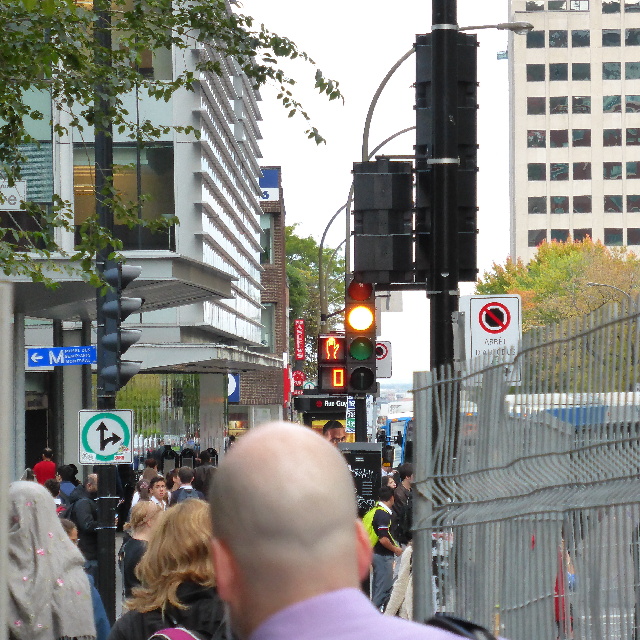“Le bain de foule” … an analytic collage
Literally translated from the French, that expression means “bathing in a crowd.”
How, with one still image as the one above, can one express the moving crowd experience when not seen through the prism of a particular narrative sequence as in a movie?
I found the key to answering this question in the visual-spatial lines of forces of the physical setting, which I analyzed and interpreted in collage fashion on the feature image, masthead of the series.
Coming down a sidewalk in downtown Montreal, from an uphill position, the elements of the city which orient and channel the moving crowd, or which allow it to spin in eddy fashion, have been schematized so as to underline their role in general orientation and immediate guidance of the pedestrian movement.
Tall buildings that have particular formal character, or that simply rise in splendid solitude, will serve as landmarks for general orientation in the city, specially if located at important intersections (see checkerboard pattern).
Building details such as entrance and façade treatment will help one identify the main occupancy of the area (in this case an Anglophone downtown university urban campus that has a unifying façade design on its new buildings), hence getting us ready to direct our footsteps as required, and/or to interact with a certain type of “crowd” (see sloping floor lines and yellow square).
Street intersections, as signalled by the green circle with the arrows indicating allowed vehicular turn directions, will signal to the pedestrian an accompanying typical widening of the sidewalk to allow for moving pedestrian streams to mingle, cross each other and regroup near cross-walks while waiting for the light to change … see large green circle and blue triangle pointing downward to intersection.
Finally the various eye level elements, such as public works site fencing, will gradually narrow the sidewalk and make us more aware of, and ready to deal with, the narrowing pedestrian streams in two directions (see vertical Frost fence posts lines).
In this image, one senses, however foreshortened, the dynamic interaction of the social and spatial elements which condition the moving urban crowd experience—unfortunately the sound element is missing for the additional behavioural cues it provides to evaluating and projecting one’s physical and social involvement with the various elements of our immediate and distant environment.
Through repetitive experience and feedback, we learn to read and or interpret these elements toward a more efficient and sociable “moving crowd behaviour”.
All photos and collage credit Maurice Amiel

